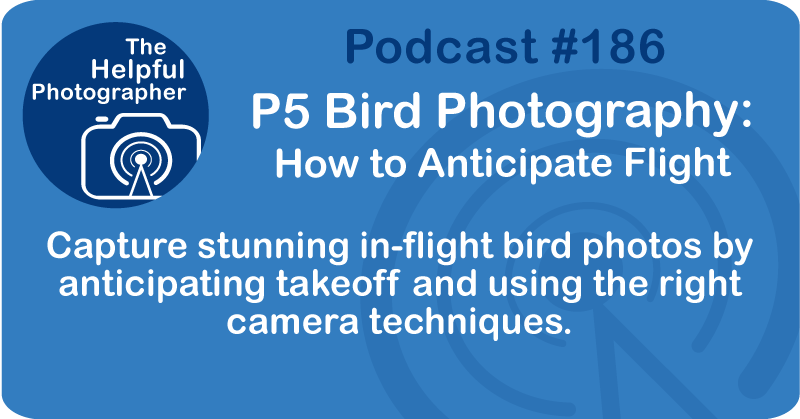P5 Bird Photography: How to Anticipate Flight #186

This is episode five of a six-part series on bird photography. In our last episode, we talked about learning animal routines, how every creature from tanagers to monkeys to people has habits you can observe and predict.
Once you spot those routines, you can be in the right place at the right time, ready for the shot. Today, we're taking that one step further and focusing on one of the trickiest and most rewarding skills in bird photography, anticipating flight. Let's be honest, getting a sharp, well-composed shot of a bird sitting on a branch is good practice. But for me, it's not the ultimate goal. It's just a bird on a stick, right? The photos that really wow people?
Those are the ones where the bird is in the air, wings outstretched, motion frozen, maybe even coming right at you. So how do you get those shots without relying on pure luck? The answer is read the bird's body language. Birds rarely leap into the air without warning. If you watch closely, you'll notice little cues. Very often a bird will bend its knees just before taking off. If it does, and it gazes upwards, it's likely to launch into the air. But if it's looking downwards, it's probably just going to drop suddenly, almost like a dive bomb. Some species even give a little wing twitch as they're winding up. Perched songbirds often take off within 30 seconds to a minute of landing. Rarely do they sit still for much longer. If you see a bird land, odds are you only have a short window.
Raptors, on the other hand, can perch for much longer. In their case, the moment is when their focus locks on to prey. That's your cue to be ready. Once you learn to recognize those signals, you can be ready a split second before they launch. Timing is everything. Waiting until the bird takes flight to press the shutter is really too late. The moment's gone before your finger reacts. That's why practice is key. Learn to trigger the shutter at the pre-flight cue.
Not after. Even with tools like pre-capture, success still depends on noticing those signals and reacting as soon as possible. Another trick, know when birds are most likely to fly. Also, don't zoom in too tightly. Although I always encourage photographers to shoot to frame, I found that this was too tight for shooting moving objects. If I tried that, I very often cut off their head, clip a wing, or cut off a tail. So back off your framing a bit so you can keep the whole animal in the frame. And don't forget the gear side of this. Shooting at high speed continuous is your best friend here. Single shot won't cut it. You need to be in burst mode to increase your chances of catching that perfect wing position. Pair that with the custom settings I talked about back in episode 183 and you'll be ready to go in an instant.
If you're struggling with heavy glass, like those 400 or 600mm lenses, consider using a monopod. I know they're not glamorous, but trust me, if you're waiting for long stretches, a monopod saves your arms and keeps your framing steadier. I'll actually dive into that in the next episode. So here's the recap. Learn the cues. Watch for crouching, tail flicks, or weight shifts. Anticipate. Don't react.
Hit the shutter just before the bird launches and use pre-capture if you have it. Know species behavior. Songbirds move fast, raptors can take longer. Use high speed continuous mode to capture the moment. And save your energy with a monopod when working with big long lenses. Okay, that wraps up today's episode. I hope this gives you the confidence to go after those dynamic in-flight shots instead of just settling for birds on a stick.
In the next and final episode of this series, I'll talk about monopods, why they don't get the love they deserve, and how you can transform your wildlife photography, especially when you're waiting for that perfect moment. And of course, if you want to join me for one of these safaris, go to boundlessphotosafari.com. Until next time, keep on shooting.











